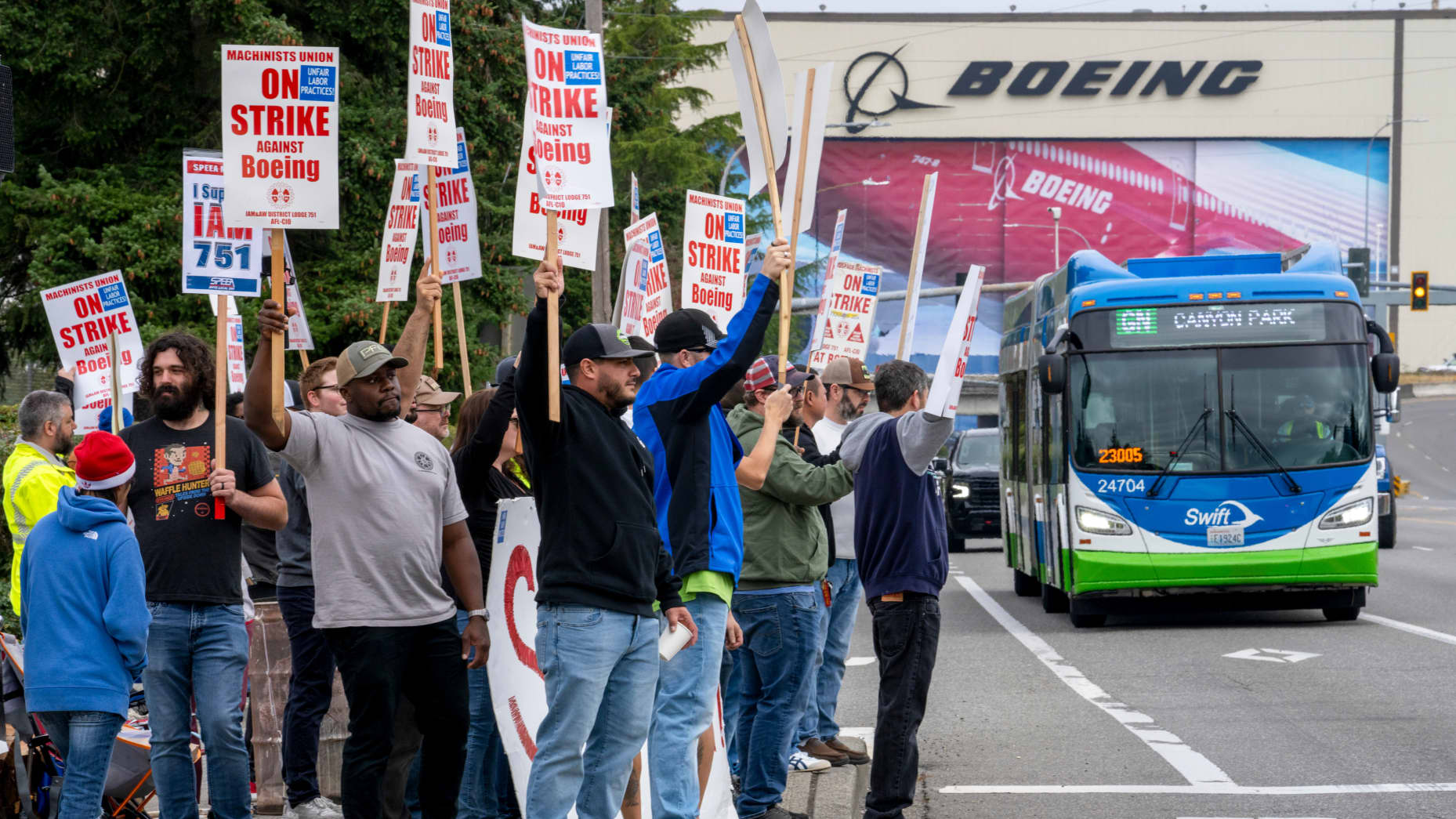Boeing furlough plans have taken effect as the company grapples with the aftermath of a major machinist strike. Tens of thousands of employees, including executives, managers, and other staff members, are being temporarily furloughed in response to the ongoing labor dispute.
This decision comes after over 30,000 machinists in Seattle and Oregon rejected a new labor contract and voted overwhelmingly to strike, significantly impacting Boeing’s operations.
The machinists’ strike, which began after a 96% vote in favor of walking off the job, has forced Boeing to take tough measures to preserve cash flow and protect its long-term future.
The company had offered a 25% raise, which the union initially endorsed, but the contract was ultimately rejected due to concerns about the offer’s ability to keep pace with rising living costs in the Seattle area and the lack of pension restoration.
Impact of the Machinist Strike on Boeing
The Boeing furloughs are a direct result of the breakdown in negotiations between the company and the machinists’ union. Despite offering wage increases, the union members felt the deal did not go far enough, particularly when considering the increasing cost of living in the areas where Boeing operates. Union members also expressed frustration with the company’s refusal to restore pensions, a key sticking point in the talks.
Boeing furlough actions are expected to impact tens of thousands of workers, with employees taking one week off every four weeks for the duration of the strike.
Read : Boeing Starliner Spacecraft Triggers ‘Disturbing’ Sonar Pings from Space Station
Read : Damaged Starliner Lands on Earth Without Sunita Williams: Watch
CEO Kelly Ortberg, who has only been in his position for a few weeks, announced that he and other executives would also take pay cuts to share in the sacrifice. Ortberg acknowledged that the decision was difficult but necessary to protect the company during this challenging time.
Boeing’s Strategy Amid the Crisis
As the strike continues, Boeing furloughs have become an essential part of the company’s strategy to manage its finances and maintain critical operations. Boeing’s CFO, Brian West, announced earlier in the week that the company would freeze hiring and raises, in addition to letting go of non-essential contractors temporarily.
These steps, while necessary for cost-cutting, add to the existing challenges Boeing faces, including overcoming recent safety and quality issues and managing its significant debt load.
Boeing furlough measures also prioritize maintaining key safety, quality, and customer support activities. Production of the company’s 787 Dreamliners, manufactured at a nonunion facility in South Carolina, is set to continue, while other projects will be scaled back.
Read : Ranking the World’s Top 10 Strongest Space Agencies
The company’s leadership has emphasized that while the furloughs are necessary to preserve cash, critical programs will continue without interruption.
Future Outlook for Boeing Amid the Strike
The duration of the machinist strike and its financial impact on Boeing remain uncertain. Boeing furlough plans will likely continue for as long as the strike lasts, adding pressure to both the company and its workforce. The union has expressed frustration with the lack of progress in negotiations, and while both sides have engaged a mediator, no resolution is currently in sight.

Boeing’s ability to navigate this crisis will depend on how quickly it can reach an agreement with the machinists. The company is already under significant pressure to move past recent safety and quality crises, including the fallout from a near-catastrophic door plug blowout earlier this year.
Additionally, Boeing is managing $60 billion in debt, making it crucial for the company to resolve the strike and return to full production as soon as possible.
Boeing furloughs, while a temporary measure, have already created a ripple effect throughout the aerospace industry. The longer the strike lasts, the more it could affect Boeing’s production schedules and delivery timelines, potentially impacting its relationships with customers and suppliers.
The strike is also likely to have an economic impact on the communities where Boeing operates, particularly in the Seattle area and Oregon, where many of the machinists live and work.
In the coming weeks, all eyes will be on the negotiations between Boeing and the machinists’ union. Both sides will need to make concessions to reach an agreement that addresses the concerns of the workers while ensuring the company’s financial stability. For now, Boeing furlough measures will remain in place, and the company’s leadership will continue to navigate this difficult period with a focus on preserving its long-term future.

